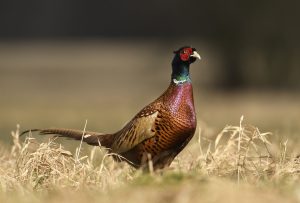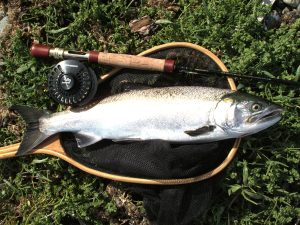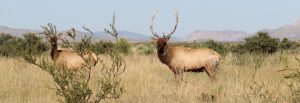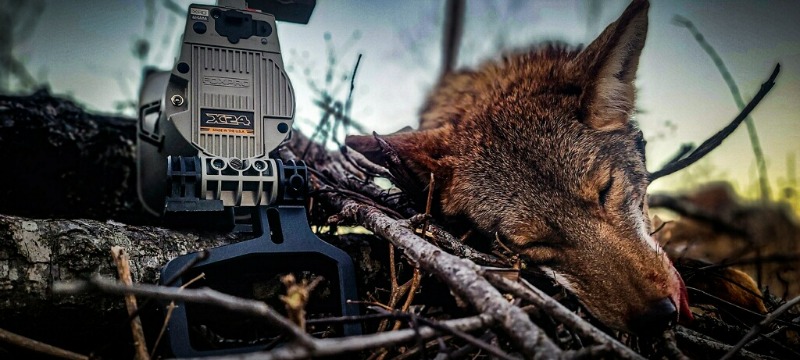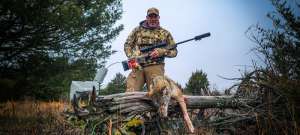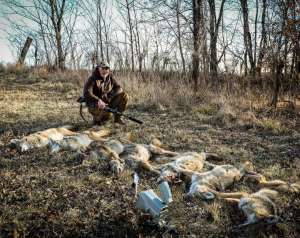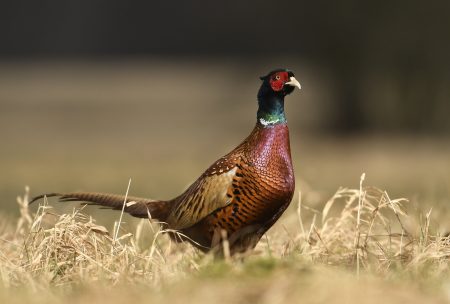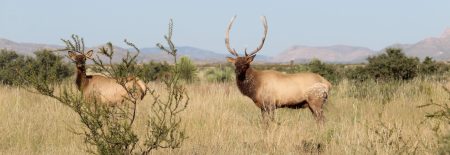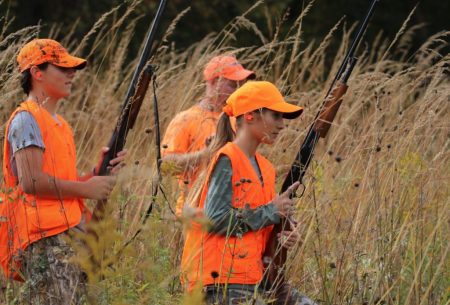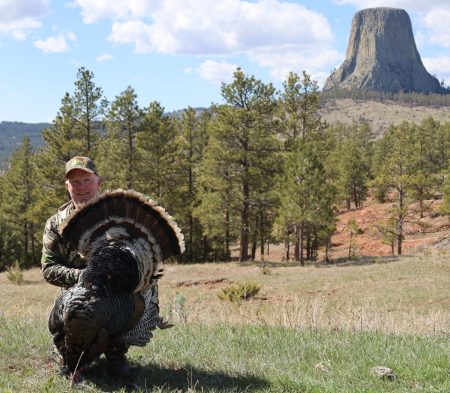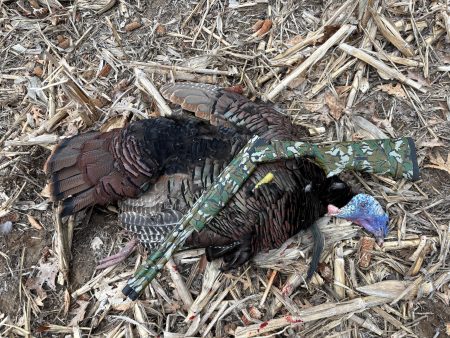After spotting sprigs of green grass beginning to pop through the brown winter fields, I knew that warmer weather and spring temperatures were near. Though I was ready for a change in the seasons, the success I had enjoyed from two months of extensive efforts calling coyotes was enough to make me long for winter to last a bit longer.
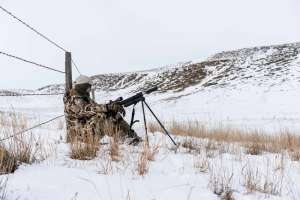
On a mild, mid-March Day I finally talked my wife into tagging along with me on a hunt. I first asked her a month or two earlier, but with the temperatures much more comfortable now, she agreed. Even though she was still hesitant, she was gearing up to come along on an evening of coyote hunting. It was the first time we’d ever had a date night/coyote hunt. What we were about to experience was as lovely as dinner and a movie, except it was only us and Mother Nature.
Sitting on a steep creek bank that split the levels of two cow pastures, I began a calling sequence. I used a lone coyote sound with the howl on my electronic call. With my wife sitting close by, we faced different directions for a better vantage point if something responded to our calls.
The past couple of times I had been hunting, I couldn’t get a reaction from any coyote sounds and my success seemed to be dwindling.
After a minute or two of playing the howls, my wife’s eyes flew open as a coyote responded by howling back at our call. To make the situation more intense, the howl had come from behind my wife. A few seconds later, I spotted the dog sitting at the edge of the field at approximately 200 yards. To avoid him seeing us, I informed her to stay still and not move her head. The coyote began making his way closer, finally reaching 75 yards. The entire time it was easing closer, my wife moved her head enough to barely catch sight of the coyote before I had to take the shot.
After I made the shot, she bounced with excitement like a small child. “That was intense,” she exclaimed. My excitement level rushed at full force, as well. I was able to experience an exciting hunt with my wife for the first time, and I had broken a dry spell that had gone on since mid-February when coyote breeding season was ending.
Post-Breeding Lull & Coyote Sounds
As many Whitetail hunters find, the post-breeding lull can be one of the most challenging times to hunt. Once the breeding season has ended, mature bucks bed down to recoup. They want to rest after an intense couple of months when their energy level and body health have dramatically decreased. The same downtime applies to coyotes after their breeding season. That situation leaves many hunters going through dry spells when predators are more challenging to call.
FoxPro field staff member Corey Groff is from southern Missouri. He has been calling coyotes in the Midwest since he was 14 years old. Groff agrees that coyotes enter a post-breeding lull period, typically from mid-February to March.
The breeding season occurs at different times across the country. Generally, it takes place from January through early March. In the Midwest, Groff says that from his experience, breeding begins in early January. During this time, coyotes are seen pairing up while finding their mates and females will show signs of being in heat. Groff says that heading into the third week of January, he has encountered coyotes breeding, and that continues into the first and second weeks of February. By the end of the month, mating is winding down, and the recovery period (or the lull) begins.
During the lull, many hunters experience a more challenging hunt. However, Groff believes that by approaching the coyote’s core area differently and by adjusting call sounds to fit the period after the breeding season, coyotes will respond. That gives hunters more opportunities to make a harvest.
“During the recovery time, you should crowd the core areas where you have seen or heard coyote sounds,” says Groff. He cites the example of when a hunter is in an open valley and knows there is a particular thicket where coyotes like to spend their time. That’s the time to crowd the thicket area and not give too much room for them to travel, he explains. “A coyote doesn’t want to move a lot during the post-period of the breeding season,” Groff says. Since they don’t want to move as much, getting in close before calling coyotes is imperative.
When coyotes are in the recovery stage of the post-breeding season, lesser movement is not the only reason for the common struggles many predator callers experience. At this time of year, coyotes are trying to regain the winter fat they lost during the mating season. They are also starting to establish denning sites for when they have their pups. As Groff explains, “Another reason predators are harder to respond to your calling at this time of year is that they have been called at and hunted hard for the past two months” When coyotes have felt a lot of hunting pressure, they can react the same way as a spring gobbler after being hunted all season—they get somewhat call-shy and more cautious when responding to calls.
Read more on Calling Coyotes: Calling Coyotes 101: 10 Tips and Tricks for Fur Down – North American Outdoorsman
Post-Lull Coyote Calling Strategies
When Groff begins to experience hard-to-call coyotes during the post-lull period, he changes the sound selection from his FoxPro electronic call.

After the breeding season, coyotes haven’t dispersed and are still encountered in pairs. Coyotes will stay together because they are establishing a family group and preparing for their den. Yet, hunters will likely call in more singles than doubles, says Groff. “These single coyotes are helper coyotes,” he notes, referring to helper coyotes such as older dogs who are too old to breed or younger ones who cannot breed yet. These are the coyotes helping the family groups in the core areas. By using more prey-in-distress sounds, along with a few vocals, the hunter may not have the same action as they would earlier in the year, but coyotes are still going to come to a call.
To restore their body weight and store enough nutrition for the upcoming denning season, coyotes seek more food. Playing more prey sounds on an electronic call or using hand calls is the most effective method of calling. When coyotes prepare for dens, they become even more territorial. Even though prey-in-distress is the go-to call tactic, as Groff suggests, keeping a selection of coyote sounds is also vital due to the territorial instincts of post-breeding coyotes.
Per our affiliate disclosure, we may earn revenue from the products available on this page.

